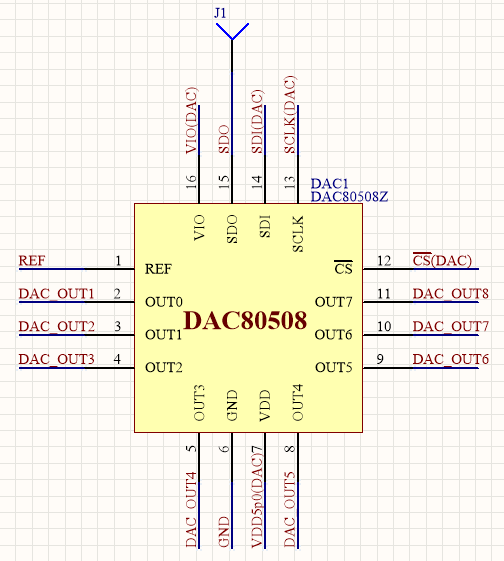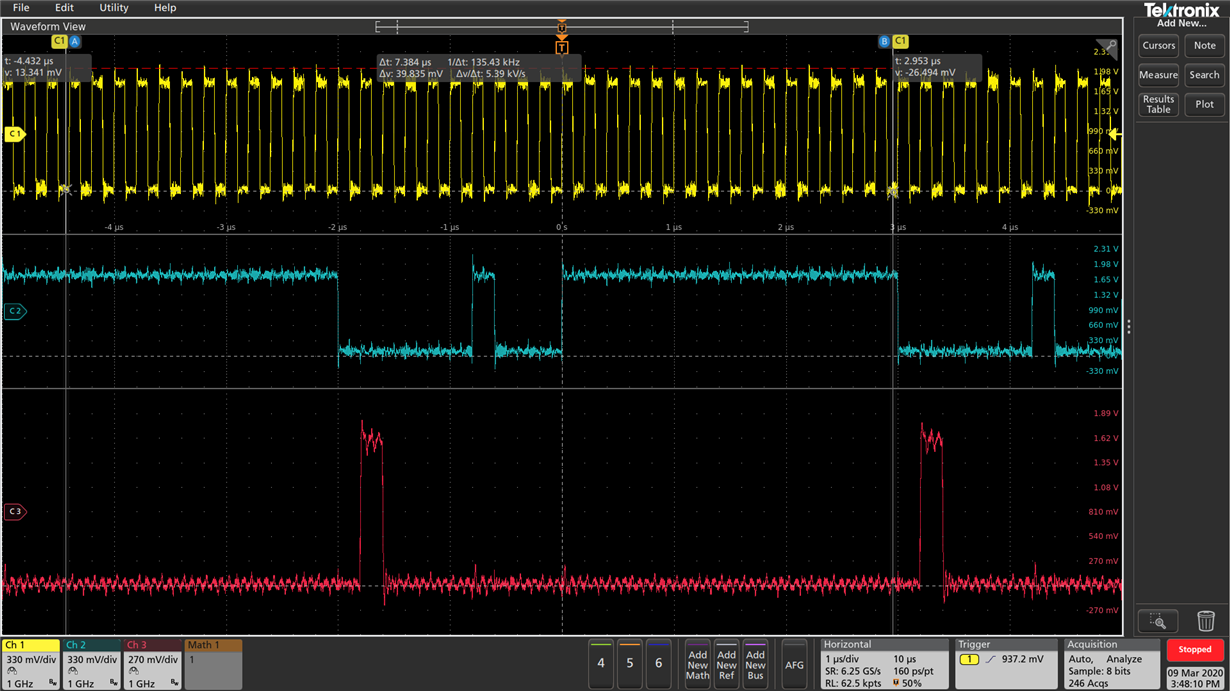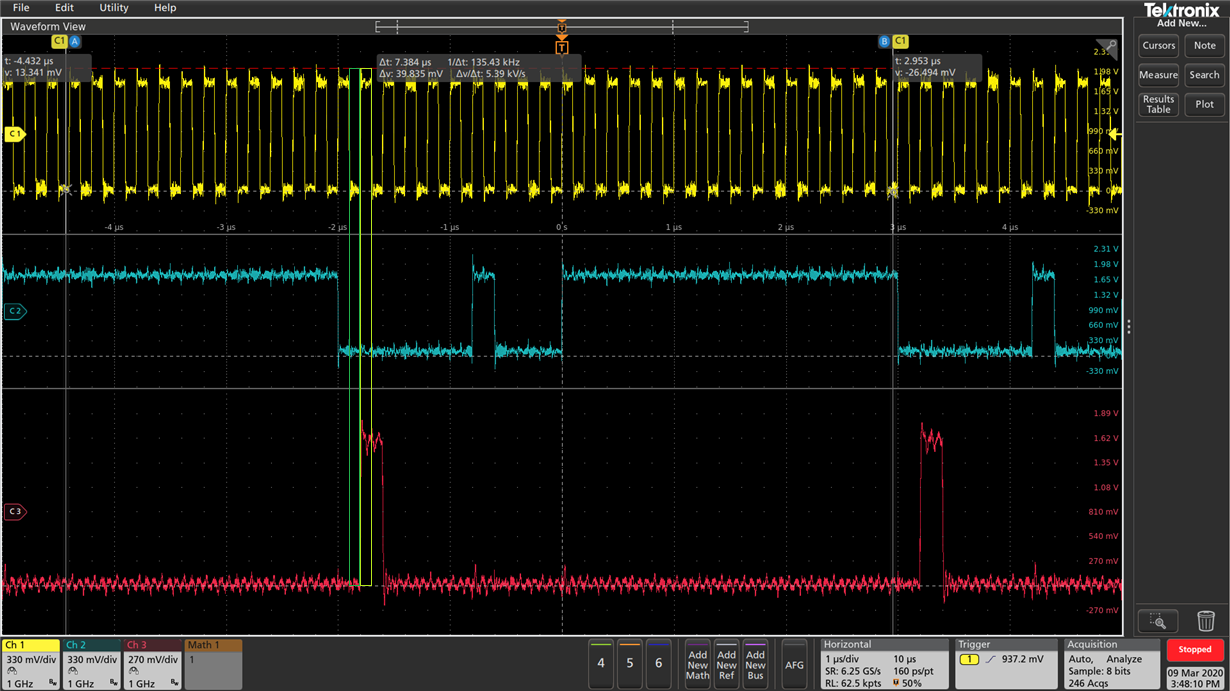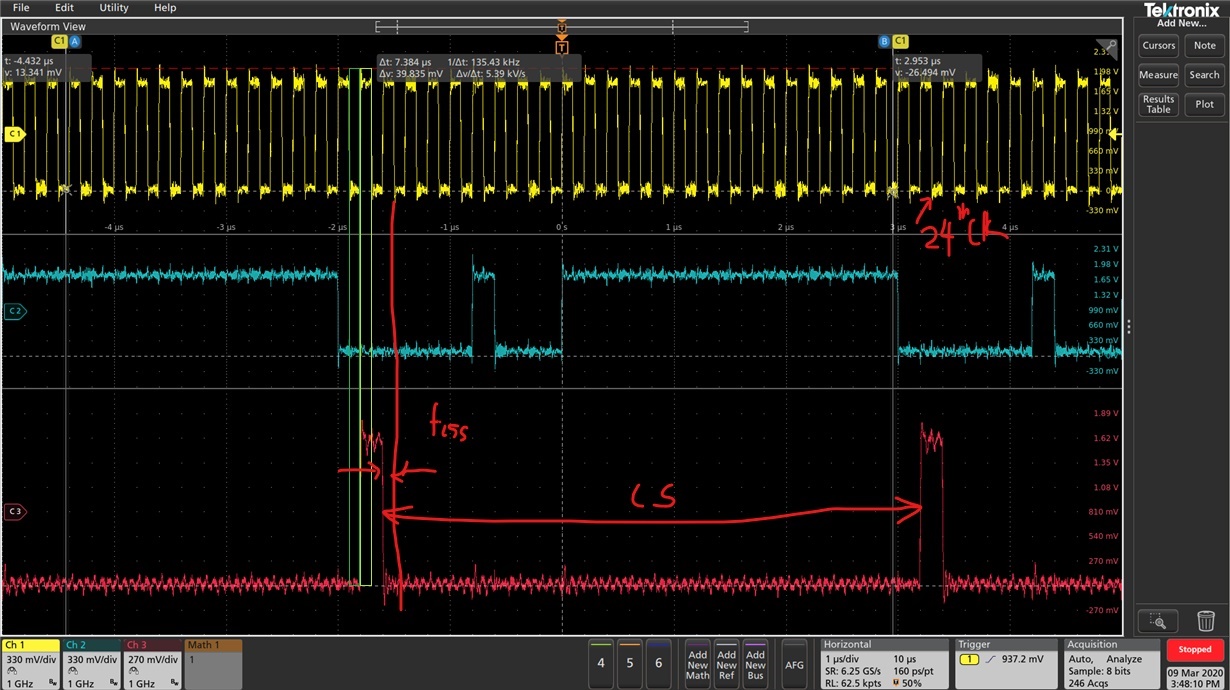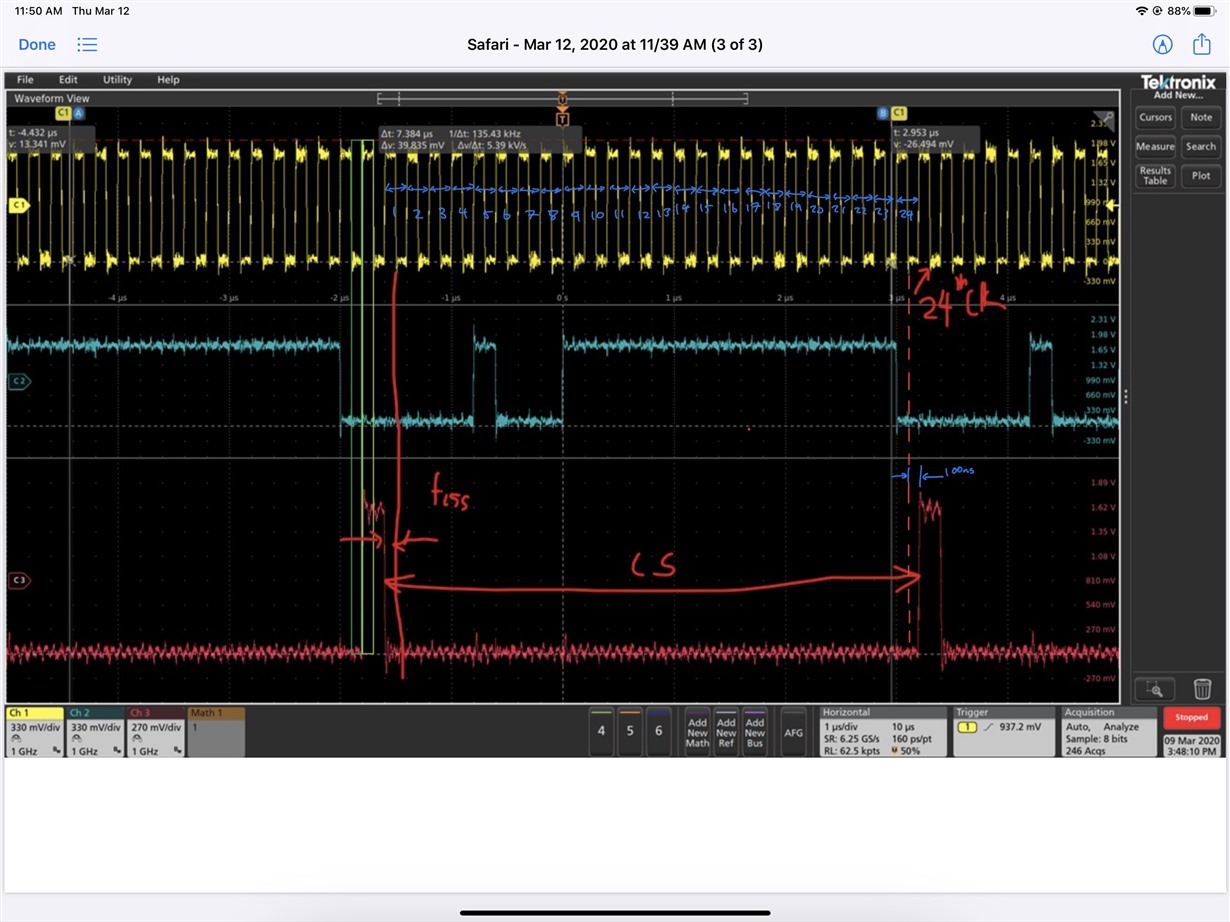Hi
My team is trying to output two distinct voltages from the device, and currently we are using the broadcast mode to output voltage#1 from OUT0, OUT2, OUT4, OUT6, and voltage#2 from OUT1, OUT3, OUT5, OUT7.
The exact steps are the following:
- Write 0x0400FF to SDI to set DIV to ÷1 and GAIN to ×2 in the GAIN register for initialization.
- Write 0x0255FF to SDI to set OUT0, OUT2, OUT4, OUT6 to broadcast mode in the SYNC register.
- Write 0x06 + (16 bits for voltage#1) in the BRDCAST register to broadcast voltage#1.
- Write 0x02AAFF to SDI to set OUT1, OUT3, OUT5, OUT7 to broadcast mode in the SYNC register.
- Write 0x06 + (16 bits for voltage#2) in the BRDCAST register to broadcast voltage#1.
However, the outputs are always 2.5 V, which seems to the REF voltage.
We also tried to output a voltage from OUT0 only as follows:
- Write 0x0400FF to SDI to set DIV to ÷1 and GAIN to ×2 in the GAIN register for initialization.
- Write 0x020000 to SDI for non-broadcasting mode and asynchronous mode in the SYNC register.
- Write 0x08 + (16 bits for voltage) to set voltage at OUT0 in the DAC0 register.
However, the output is still 2.5 V.
The only "responsive" thing is that when we set DIV to ÷2 (set that bit to HIGH), the voltage at the outputs becomes 1.25 V instead of 2.5 V.
For now we would like to know if the commands / values we are sending into SDI are correct for the requirement.
Thank you very much.


